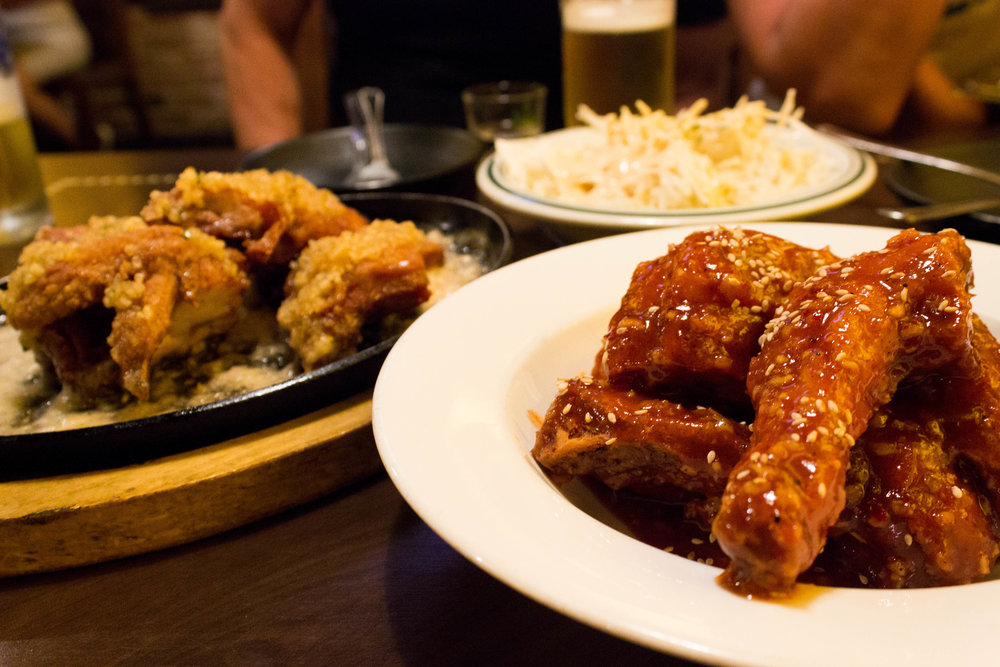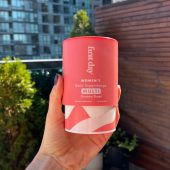It’s said “when in Rome, do as the Romans do”, and that’s the same belief when it comes to South Korea. In Seoul, the food scene is spicy, sweet, and savory. It’s a place where one dish is simply not enough; in fact most meals have over 10 dishes. Whether you explore questionable looking night markets or world-class restaurants, one thing is consistent; Korean food is packed with flavor.

A FAILED FIRST EXPERIENCE
As a foreigner, my first experience with Korean cuisine was a bit frustrating because I couldn’t find a place that spoke English. I had just landed from 15 hours of flying, and wanted to stuff my face with noodles, spicy beef, and Korean delicacies that I didn’t even know existed yet.

The first spot I walked into refused to serve me saying “The food is not good for you.” Apparently, he was sick of people that looked like me, telling him that his soup was too spicy. Though Korean food is often filled with hot flavors, I loved it and couldn’t seem to convince him to give me a taste to prove my worthiness. Nonetheless, I left the shop empty handed.

My second stop only served chicken feet dishes, which I didn’t feel was the best food item to start with after 15 hours of flying and jet lag (or in general). I passed on that opportunity and walked a few alleys away to find my final stop.
THE JOURNEY TO DISCOVERING KOREAN FOOD BEGINS
From the outside, it didn’t look like much. On the inside, I couldn’t find a word of English, yet the hostess bowed when I entered and pointed at a paper menu that was in English. I was thrilled – someone will feed me!

That night my taste buds danced through a savory, soupy noodle dish with delectable minced beef, and several spicy side dishes that resembled different colored pickled vegetables. At the time, I didn’t know what they were and didn’t think to ask, because let’s face it, the hostess probably wouldn’t be able to explain it to me in English anyway.
There comes a point during traveling, when you stop asking questions and simply start doing. I believe this is the best strategy when in a country with language barriers, such as Korea. Do as the locals do and you will have a great time.
THE NEED TO EDUCATE MYSELF FURTHER ON KOREAN CUISINE
It was clear that I needed to educate myself on Korean cuisine, so I booked a food tour with Ongo Food Communications, experts in all things involving cooking and edible experiences.

Chris, a local guide, met us in the Jongno district, an area often overlooked by tourists. From the moment we met Chris, I knew it was going to be a fun night. He reached out a hand dazzled with several colorful woven bracelets, and said “Hey, I’m Chris” in perfect English. His outfit was nothing short of a K-Pop video, and he had a long necklace with a pair of baby sized sneakers hanging from his neck. I immediately felt the need to head to the nearest clothing store and change my outfit.
The truth is that Chris isn’t a typical Korean (whatever that means), he lived in the US during his teens for several years. He was the perfect guide because he understood our background as people from the US and he had expert knowledge of Korea since he was born there. After, introducing ourselves and learning a bit about each other, we headed to Korean BBQ to begin the night.
A NIGHT OF INCREDIBLE KOREAN FOOD

We walked along narrow alleyways and eventually inside a place called Cha Yi Ya Gi, that is known for its Korean BBQ (beef) with fresh vegetables. A woman rushed over and lit the stove top in the center of the table and began to lay rich, red meat on it. The beef sizzled and smelled incredible. As the meat cooked, Chris began making a classic drink that is called something I can’t pronounce in Korean, and “sweet after bitter” in English. It’s more than just a drink, it’s an experience.

This drink has a few steps, so I’ll list them out here, so you can repeat at home.
- Put a little bit of Coca-Cola in a glass then put an empty shot glass in it. You want the glass to be thin so the shot glass gets stuck about halfway down. The coke should reach up to the shot glass but not pour inside of it.
- Pour soju in the shot glass
- Pour beer the remainder of the way so the cup is full
- Drink it as fast as you can
- Get drunk fast (lol)

Chris graciously assembled this for us to enjoy during our time at Cha Yi Ya Gi. It was a bit messy to drink if you’re not careful so beware! I enjoyed the flavor quite a bit though, it was truly bitter then sweet. Just as the name suggests.

After enjoying savory grilled meat served on sesame leaves (similar to a taco), we headed to our next stop. While walking along the street, Chris pointed at a stone wall with faded Korean symbols written on it and said “That’s where people eat dog. It’s frowned upon here but not illegal.” Interesting….

We continued through winding alleyways with colorful neon signs. Eventually, walking into a place called Mat Bo Rae, famous for their toppoki (rice cake stew with noodles, beef and dumplings). Again, the dish was prepared at the table. The soup bubbled in front of us as Chris explained that this dish used to be served to kings.

Back then, royalty did not eat spicy food because they did not want to sweat. Therefore, this broth was made of fruits instead of hot spices. It had rich, sweet flavors. The rice cake noodles were thick and chewy, but great in food. Again, we had a traditional Korean drink to pair with the meal. This time it was a sweet wine that tasted a bit like Robitussin. Thank goodness Koreans prefer soju instead!

Modern Korean culture has its own unique flavor. The heavy influence of western culture has created a popularity of dishes that were not consumed a hundred years earlier. Today Seoulites are practically obsessed with a classic combination; fried chicken and beer.
Samtong Chicken is a prime example of this. Here, you can order fried chicken infused with a wide array of tasty spices and garnishes. We ordered their original sweet & spicy flavor and garlic flavor. It had a good spice balance, and aromatic spices like cinnamon and clove. The chicken was crispy and glazed in all that delicious sauce. It paired perfectly with a cold beer (as expected!).

To close out the night we headed to Cha Bahk Mool Gwan, a spot famous for their dessert and traditional tea museum. The interior of the space felt like a Korean courtyard with a classic Kiwa roof inside to create an outdoor atmosphere. Here we had bingsoo (shaved ice with red beans, nuts and condensed milk). This is always made fresh to create the shaved ice and melts quickly so it was important to enjoy it thoroughly and not waste much time between bites. Prior to visiting Korea, I would think that a dessert with red beans would be strange, however, it’s quite yummy and surprisingly sweet. Paired with the other ingredients, it had a creamy vanilla flavor.

We also had the opportunity to try rice cake covered with crushed black Sesame seeds. In my opinion, this was more of a texture than a flavor. It had a similar texture as a gummy bear. The flavor was very subtle. However, the appearance resembled coal or black quartz. The crushed Sesame seeds sparkled in the light. It was very unique!

THE BEST WAY TO EXPERIENCE A COUNTRY IS THROUGH ITS FOOD
Alas it was time to close out our night. I left with a deeper understanding of Korean cuisine, which I desperately needed, and new friends. I always say, there is no better way to get a grasp on a country than through its cuisine and once again this proved to be true. The lesson here is simple, if you’re visiting Korea pair up with someone that knows the cuisine before you end up in a shop that only serves chicken feet.

If you’re visiting Korea soon, make sure to visit the Korean Tourism Boards site at VisitKorea.or.kr. They have tons of information on things to do, know, eat, and drink while exploring this beautiful country. I was a guest of Ongo Food Communications. I went on the Night Dining Tour. It is $88 per person. To book a tour visit OngoFood.com.
















This site is protected by reCAPTCHA and the Google Privacy Policy and Terms of Service apply.